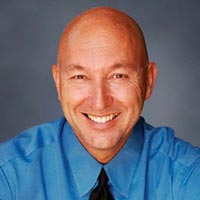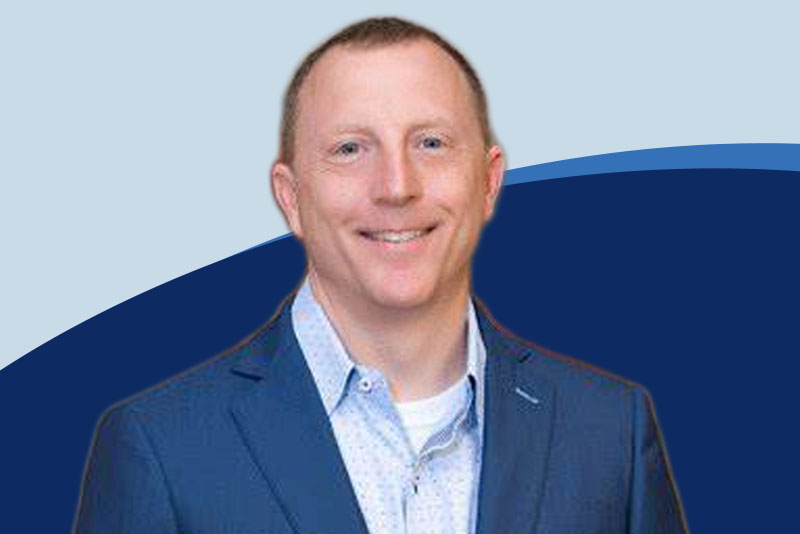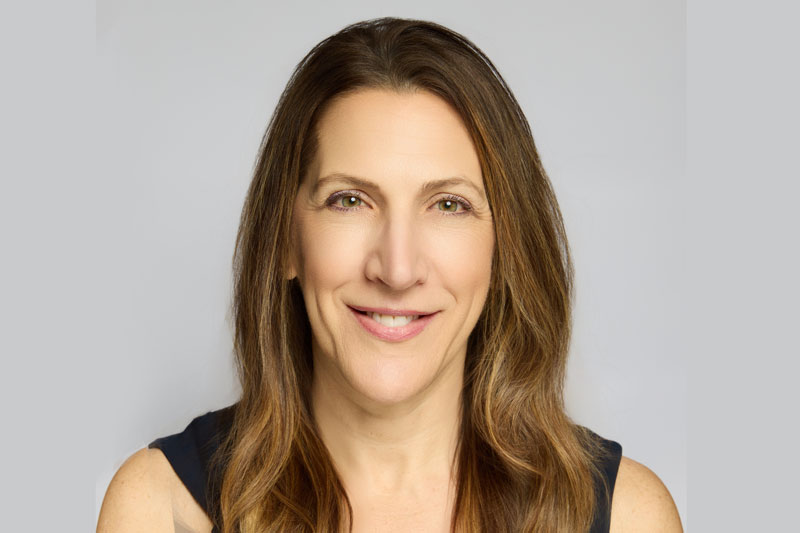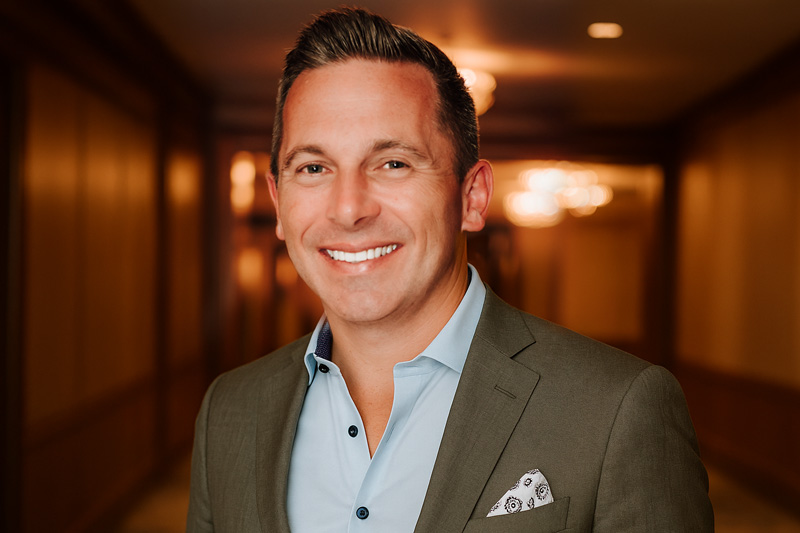Episode #351: Legal Strategy & Practice Growth: What Dentists Must Know to Thrive Without PPOs, with Brian Colao
Listen Now
Podcast: Play in new window | Download
Subscribe: RSS
It is not very easy to decide to go out-of-network when you do not know the actual consequences of making that decision. When it comes to dropping PPO plans, dentists are mainly concerned about the percentage of patients the new PPO-free practice will lose. And it has become the most frequently asked question that stops dentists from going out-of-network due to the fear of uncertainty. It would be false to say that you won’t lose any patients once you drop PPO plans. However, this episode will help you decide whether or not the percentage of patients you will lose is high enough to stop you from going out-of-network, as Gary shares a real-life case study.
Gary: Welcome to another episode of the less insurance dependence podcast; you’re going to enjoy this one because we’re going to answer a question that we commonly get. In fact, this is one of the most common questions we receive. What percentage of patients will I lose when I go out of network? Naren, I’m excited about this one; what do you think?
Naren: Gary, this is a question that a lot of people ask because we have done several events, and I think this is one of those questions that you get every single time, and you talk about anything related to PPO, so
Gary: it’s a great question! It’s really what is on everyone’s mind
Naren: Yeah
Gary: And we’ve got some info. We’ve got data. It’s not just opinions. We have data to share with you. So that’s our topic. I think you’re going to enjoy this one.
Naren: perfect, absolutely get it before we jump in. I have a quick announcement for everyone; we have the three three-part MBA workshop, the thriving dentist MBA workshop coming up. It’s on the 20th, 21st and 22nd of April. We limit attendance to 20 people. We have a few spots left. It’s Tuesday, Wednesday, Thursday 20th 21st 22nd 7 to 10 p.m. Gary goes through the ten elements 24 systems 9 hours of CE 11 exercises, so you can apply all of this to your business. I like the three-part format just because then you can think about it, come back the next day, work on it some more, think about it, come back the next day, and work on it some more. So, it ends up being almost like a business planning exercise for you to figure out what you need to do to, you know, create a thriving practice. Gary, let’s jump in.
Gary: Yeah, thanks for talking about our upcoming MBA live stream workshop Naren. It’s just a question that is on every dentist’s mind, hey, and let’s speak to the obvious. When you go out of network, you will lose patience. That’s just the reality. I mean, I would love to tell you that, oh no, if you know you’re going to keep all of them, and that simply isn’t true. You’re going to lose some. Now when we did this in my own practice, we had no idea, and when we went out of network, we had no idea we knew we would lose some, but we didn’t know, and we were very pleasantly surprised and now in our coaching work where we’ve done this you know many times hundreds of times we have data from those practices and what I tell our clients today is when you do this right and what I mean by that is you have all your readiness checklist every item on the readiness checklist checked off, when you do this right, our goal obviously is to keep as many existing patients who are in-network as possible, as many as possible and the specific goal I give them is to keep somewhere between 85 and 90 percent of your existing patients. Now when I share that with the client at the beginning, oftentimes, they’re surprised really, that means I’m only going to lose 10 or 15 percent. Oh, I don’t think so, Gary, I think we’re going to lose a lot more than that, and I thought the same thing. I just say, hey, you’re just simply saying what I was experiencing many years ago. I felt the same way, but now we’ve learned, and we have this data from hundreds of practices. Let me use a case study.
Naren: Gary, before we jump into that, I just wanted to talk about why this number is significant because you talk about adjustments being, you know, 40 percent right on average so let’s do the math
Gary: let’s actually, actually, let’s correct it 42 to 44 percent
Naren: all right
Gary: as at the time of this recording
Naren: right
Gary: in early 2021, of course, you’re you know your mileage may vary depending on your plans
Naren: right
Gary: but what we typically see today is the typical adjustment, and let’s not bounce around you know terms assuming everybody knows it the insurance adjustment is the difference between your usual fee and your contracted fee. You might think of it as a PPO write-off.
Naren: right
Gary: the average write-off today is 42 to 44 percent. It could be greater and in some cases could be less, but the average is 42 to 44, meaning that if you have, let’s use 44; if your fee was a thousand dollars for whatever service you’re providing, I’m making up around number that means you don’t if it’s a PPO patient you don’t get a thousand dollars you get 560 you get 56 percent the opposite of 44. So, you get 560. Now you got to make your practice work on 560 dollars for that service instead of a thousand dollars.
Naren: so, the relationship between this number and the number of patients you lose is, here you get to keep 560 Dollars. Let’s say on 100 patients right because they’re all PPO. So 560 times 100 is 56 000 dollars as opposed to you get to keep the entire thousand dollars on 90, eighty-five to ninety percent of the patient, let’s assume eighty-five the lowest number.
Gary: Let’s assume eighty-five making 85, making it conservative
Naren: Right, so that means you end up keeping 100 patients. Sorry, 85 patients times a thousand dollars. So you end up keeping 85 000 which is better, fifty-six thousand or eighty-five thousand?
Gary: Wait a minute, let me think about it; okay, I know this one, I know this one. In my math now, you know some of the kids are learning new math now. In the new math is 85 000 more than 56 000. I think it is
Naren: it still is absolutely is
Gary: math is math
Naren: yeah, math is math
Gary: math is math yeah 85 000 is more than 56 000 any way you do the math, yeah, and what we tell our clients is our goal if we want to set a goal you know how do you know if you know what your finish line is if you don’t have the finish line, we want to set a goal, and the goal is to retain we try to put in a positive way instead of negative. We want to keep 85 to 90 percent of them, and I wanted to share the case study. So, this happened recently; this is two weeks ago at the time we’re recording this two weeks ago. One of my coaching clients has had recently completed the entire process of going out of network and I asked her to keep detailed records for us because I wanted to do a debrief with her and be able to measure everything we possibly could and I said please and this is the kind of person the dentist that I knew I wouldn’t have to ask her twice to keep records because she’s a very detail-oriented person and data is her friend, she loves data, and so I knew this was like the perfect person to ask this because it’s in her wheelhouse and so two weeks ago we had a debriefing call at the end of this to take a look at and see what happened and we’re on that call and she had a very positive tone, so I knew it was going to be a good call and she’s like Gary you know remember how you said the goal was to keep 85 to 90 percent that means we’re going to lose 10 to 15 she said I went ahead just to kind of cushion myself to set the goal at 15 we’re going to lose 15 and she said we kind of operated on that thinking that if it was fifteen percent or less we’d feel really good about it and she said I’m ready to report to you drum roll please we lost 12 percent of my patients 12, and she so if the benchmark was 10 to 15 she was 12. She’s on the low end of an A on the report card; yeah, she’s that’s an A, A plus on the report card, wouldn’t you agree?
Naren: Exactly, exactly, exactly.
Gary: So it was a zoom call like this like we’re on right now, and I happen to notice her looking down, and she was looking at a piece of paper, and she’s smiling, she’s looking at this paper, and she’s literally like smiling ear to ear, and I said what if you don’t mind me asking what are you looking at what do you mean she goes oh my office manager put together a list of every patient I lost and I knew the number was 12 percent, but I haven’t looked at the list until now she just put on my desk today I haven’t had time I have time to go to the bathroom today. So, I’m barely catching my breath, but I looked at this list, and she’s smiling ear to ear, and I said, you look really happy what tell me what you’re feeling, and she said Gary, and she said one two three. There are three people that I’m going to miss on this list three, she said the rest of them now before I tell you what she said, this is a very caring dentist, she truly is caring, compassionate empathetic, all of us would be privileged to sit in her chair as a patient, her clinical expertise is brilliant, but she’s just as fine a person as she is a clinician, she genuinely cares. The reason I tell you that’s because what I’m about to say may not sound that way, but she said Gary, with the exception of three names on this list, the rest of these patients were my pita patients P-I-T-A. Now we all know what that acronym is. I’ll give you the first three words I won’t repeat the fourth word because we keep this podcast G rated. Pain in the, I’ll let you complete it, and we laughed, and I said to her I said as soon as we hang up from this zoom call, I want you to call those three patients that you’re going to miss and tell them they can’t leave, and she started laughing, and I started laughing, and she’s I said I’m serious no I want you to she I know I’m no time as soon as I hang up I’m going to call them, and I’m learning is you know George you can’t this is your dentist calling and you know you can’t leave my practice I’m going to take care of it, and I said just work it out whatever yeah it is you have to work out just where she did that, but the patients that she lost were the vast majority were patients that and I want to try to be sensitive about this you know it’s like don’t hit the door don’t let the door hit you in the back on the way out.
Naren: it makes sense, right? Because the only reason they’re coming to you is because they’re on your insurance. No other reason; So, they don’t appreciate you; they don’t appreciate your team; they don’t appreciate your technology; they don’t appreciate anything else.
Gary: Yeah, Naren, one of them she said she looked at this name and like if it was possible for smoke to be coming out of her ears, I would have seen smoke she goes, this is a guy who I’ve come in three times after hours on the emergency you know taking care of an emergency, you think he would especially appreciate me you know it all happened you know there were genuine emergencies where you know she made recommendations he didn’t accept him he waited till it was a problem and then it happened you know murphy’s law when’s that going to when’s that toothpaste is it going to blow up at noon on Tuesday no it’s going to blow up at midnight on Friday night?
Naren: Right
Gary: Yeah, so I came in three times to take care of this guy, and every time we got him out of the pain, he was thrilled and let you know I we go out of network, and he’s doing a burnout out of the parking lot never to be seen again, and she said you know I just I feel so good about this whole process, and she said the other thing is that they’re you know of the 88 percent that stayed in her practice. She said the truth is some of them, I never really knew where I stood like I knew they appreciated me, but you know you don’t know how much and what are they doing now they’re voting with their feet they’re saying doc I’m not going anywhere else you got to be kidding I love it here I love the way you take care of me I love your team, and I’m going to stay here in your practice.
Naren: now I have to give you credit see, you make it sound so simple, like keeping 88 percent of your patients; this is 40 years in the making. You tried it with less you know life smiles since 2007 you tried it with hundreds of practices you have a six-step process you have verbal skills that can go on and on all the things you do with your coaching clients, I mean so I have to say she had a great coach.
Gary: Well, thank you, and truthfully, I want to say this without doing my own horn, but it’s down to a science. We’ve got it down to it’s not random; it’s not guesswork it’s not, you know, let’s throw something against the wall and see if it sticks. We’ve got it down to a science, and yeah, it’s heart-warming to see the growing number of dentists that are really taking a look at successfully resigning from PPO plans, and the main reason for that is that their current practice structure, you know we I always talk about thriving practice, and you know when you throw around an adjective like that you know thriving can mean a lot of things to different people and I describe it very specifically thriving practice is one that provides personal professional and financial satisfaction and if your current practice model doesn’t provide personal professional and financial satisfaction, then maybe you need to make some changes or maybe you’d like to make, so what does it mean to provide the practice that provides personal satisfaction. It means TGIM. Thank goodness it’s Monday; it means I get to come to work because I’m surrounded by a team I absolutely love, and I love seeing my patients because they appreciate me. That’s what it means personal satisfaction; you know I tell my dental students I and I start with D1, you know, the very first year in dental school, and I try to help them understand the importance of developing rapport and relationship with your patients. When we genuinely know them, we know their names, we know spouses names, we know their kids’ names, we know their dog’s name, we know their hobbies, we know their interests, and it’s not just a matter of like you know trivia knowledge you have, because when you know your patients, you’re taking care of people that you genuinely care about and how could anything be more gratifying than that you know than taking people you care about, so that’s the personal side what does the professional satisfaction mean it means you get to do the kind of dentistry you want to do
Naren: yeah, because their question is it covered by insurance anymore, right like because that question is out of them out of the water because you’re no longer just in the PPO plan doing the three things that PPO will pay for and so forth.
Gary: Yeah so, the professional satisfaction is getting to do the dentistry that you truly like and truly that allows you to make a difference in their lives.
Naren: yeah
Gary: it gets, and that’s what I mean by professional financial satisfaction is a lot easier to quantify that’s a lot easier to measure, and that simply means you know, getting compensated at the level that you deserve being able to put a savings plan together whether it be a pension plan or you know some kind of savings plan
Naren: Yeah
Gary: so, you can retire with the dignity that you deserve. It means reducing your debt and having no debt.
Naren: I mean
Gary: that’s financial satisfaction
Naren: yeah, I mean we took the numbers 56 000 versus 85 000, and most practices are going to do 850 000 versus 560 000, imagine same you know less work actually because you’re not only taking care of 85 percent of patients, but you take home 85, 850 000 versus you do 15 percent more work and you take home 560 which one do you want I mean when you did the PPO write-off calculator, we’ll put a link to it, you know people are writing off 400, 500 000 dollars every single year it’s crazy
Gary: Many dentists don’t realize that, and they don’t realize it’s not their fault they don’t realize what they’re writing off because, in their software, they’ve entered their contracted fees which is a legitimate way to do it. Ninety percent of dentists in their practice management software, whether it’s open dental eagle soft Dentrix then you know whatever they’re using they’ve entered their contracted fees, and they don’t know what they’re writing off, and so we created that insurance write-off calculator it’s an excel spreadsheet that’s been programmed you enter in some simple information and the spreadsheet does the work you don’t have to do the math and it tells you what you’re writing off how much you have to produce based on the write-offs that you’re experiencing on the plans and what we typically see when we see that data is we see numbers like four hundred thousand a year five hundred thousand years six hundred thousand a year writing off and you know that Naren, that I want you to think about that doctor as a marketing expense let’s say it’s 500 000, I’m going to pick a round number. Five hundred thousand a year, I want you to think about that as a marketing expense because you’re paying the insurance company to provide you patients, and at 500 000 a year on a monthly basis, that’s 41,666 a month. So, doctor, you are spending 41 666 on marketing, and once you look at it that way, you’ll never be able to look at it another way, and then you’ll realize my goodness, I could spend a fraction of that on an on a comprehensive digital marketing program to consistently get quality new patients I could spend a fraction of that and get the added benefit of people coming to us because of reasons other than we’re on their insurance. Well, we started out by asking a question, you know this episode’s title question, what percentage of my patients can I expect to lose when I go out of network, and I think we’ve answered it that answer is 10 to 15 percent and I think when you look at you know we don’t want to lose any of them you know, and I’d love to tell you the goal is to keep a hundred percent of them it’s simply not realistic it’s not realistic in all the years I’ve done this and all the practices we’ve done it there’s never been a case where we’ve kept 100 of the patients, and so you know the reality is you’re going to lose some, but when you look at it on balance, you’re so much better off with the end result, and you know it does allow you to really make that transition to a practice that provides personal professional and financial satisfaction. So, there’s the answer, and that’s its data-driven it’s based on actual results and also every practice format location format urban-suburban big town medium-sized towns small-town rural company towns. You know some cities are much more company towns than ever meaning that there’s a number of a small number of very large employers, those are company towns Cincinnati comes to mind Procter gamble’s the big employer in Cincinnati, Houston comes to mind, you know what industry is the big employers in Houston, right?
Naren: oil gas
Gary: oil gas
Naren: yeah
Gary: it’s oil gas. Seattle Naren named four big employers in Seattle
Naren: Microsoft Amazon Boeing and Starbucks,
Gary: Starbucks, there you go. There are the four big ones
Naren: yeah
Gary: and when you’re in a corporate town, here’s another one, this one right up your wheelhouse because of your love for technology, Sunnyvale who are the employers in Sunnyvale, California,
Naren: California, that neighborhood Apple Google Facebook yeah, the big ones
Gary: Netscape
Naren: Netscape
Gary: you know it’s the high-tech companies
Naren: Yeah
Gary: And you know even in those towns
Naren: Actually, actually, oracle moved to Texas oracle bought sun, which bought Netscape anyways it’s I follow the tech, so I know, but yeah
Gary: well, they were the leading edge of the Californians moving to Texas
Naren: Tesla moved to Texas too; I’m sure you know
Gary: exactly Elon up and moved tesla from California to Texas. It’s becoming the trend these days for sure. Well, Naren, this has been a fun episode. We answered a question very specially, I hope doctors that we have provided you some encouraging information that if you’ve been on the fence, I’m really interested in this, but I don’t know well now you have another piece of information to help make that decision.
Naren: Gary, if anybody’s considering you know this and they want to have an in-depth conversation with you because I think a lot of the times like you said we are afraid of the unknown we are afraid of what we don’t know, so we assume the worst we think oh it’s going to be doom and gloom. Would you be open to maybe having a coaching strategy meeting just to kind of see a can you help them, and if so, and I know some people you have said you know what, this might not be right for you, at least not right now so
Gary: Right, oh yeah, I mean I sometimes have to be the bearer of bad news, and I’ll tell a potential client you know as much as I would like to tell you differently your practice just isn’t ready for this doesn’t mean you couldn’t do it sometime, but it would not be wise for you to do it now. Yeah, we’ll put a link in the show notes. It’s called a coaching strategy meeting. It’s with me; it’s on zoom. The purpose of that meeting is for me to get to know your practice and for you to understand our coaching and determine if that would be a good fit. If that’s something you’re interested in, by all means, I would love to do that for our less insurance dependence community. We appreciate each and every one of you, and that would be my honor to spend some time with you and you will you’ll leave that meeting with information you know; information allows you to make good informed decisions, and we’d love you to have that information. On that note, Naren, I simply want to say thank you to each and every one of our listeners. You know we love what we do here on the less insurance dependence podcast; we couldn’t do it without you three things you can do to support our work. You can tell a colleague about it. We’d love to have even more listeners. Secondly, you can jump on iTunes and write us a review begin lots of new reviews lately, but we’d love to have even more it helps more dentists find us the third thing you can do is you can hit subscribe on whatever your podcast directory is when you hit subscribe it means that every Thursday a new episode will be uploaded for your listening convenience and just one more episode or one more announcement Naren, very excited to announce our YouTube channel.
Naren: yeah
Gary: Our YouTube channel is growing geometrically; we’re adding new videos every day and sometimes multiple videos. These are short-format videos two minutes, three minutes, five minutes about something topical relative to reducing insurance or and or developing a thriving practice they’re interconnected. If you haven’t, just go to YouTube and type in thriving dentist, they’re all free, and they do great training for team members and great content to play in your team meetings; on that note, guys, thank you we’ll connect with you on the next less insurance dependence podcast thanks so much.
 One of Gary's most significant achievements as a dental practice management coach is transforming his own practice, LifeSmiles, from one that was infected with PPO plans, no effective marketing strategy, and an overhead of 80% to a very successful dental practice that is currently one of the top-performing practices in the US.
One of Gary's most significant achievements as a dental practice management coach is transforming his own practice, LifeSmiles, from one that was infected with PPO plans, no effective marketing strategy, and an overhead of 80% to a very successful dental practice that is currently one of the top-performing practices in the US.
 As CEO of Ekwa Marketing, Naren has over a decade of experience working with dental practices and helping them attract the ideal type of patients to their practices. It is his goal to help dentists do more of the type of dentistry they love with the help and support of effective digital marketing.
As CEO of Ekwa Marketing, Naren has over a decade of experience working with dental practices and helping them attract the ideal type of patients to their practices. It is his goal to help dentists do more of the type of dentistry they love with the help and support of effective digital marketing.



